This article serves as a glossary for the AWS Database Shapes, part of the AWS Simple Icons library. Each is pre-loaded into Gliffy, so you can create AWS architecture diagrams with just a few drags-and-drops.
DRAW AN AWS DIAGRAM
The table below contains the most current AWS Simple Icons in the Database set — all listed by service category and complete with a brief introduction to the product or service symbolized.
Back to top
What are AWS Database Services?
AWS Database Services includes 15 unique engines built to fit specific business needs. They’re managed by Amazon, saving teams time on tasks like configuration and backups. These services have their own icons, as well as additional icons specific to each service.
Back to top
All AWS Database Icons
Amazon RDS Icons
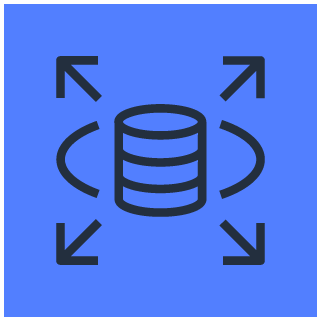 Amazon RDS | | Amazon Relational Database Service (Amazon RDS) is a web service that makes it easier to set up, operate, and scale a relational database in the cloud. It offers a cost-efficient, resizable capacity for an industry-standard relational database and manages common database administration tasks. |
| | 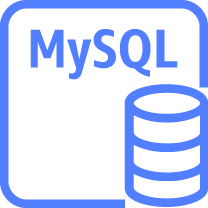 MySQL DB Instance | The basic building block of Amazon RDS is the database instance. A database instance is an isolated database environment in the cloud. Amazon RDS supports the MySQL Server DB engines. You can use this icon to represent an MySQL instance in your diagram. |
| | 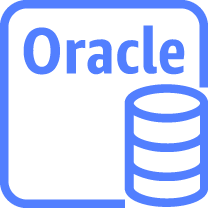 Oracle DB Instance | Amazon RDS also supports Oracle Server DB engines and you can use this icon to represent an Oracle DB instance in your diagram. |
| |  Oracle DB Instance Alt. | You can get high availability with a primary instance and a synchronous secondary instance that you can fail over to when problems occur. Use this icon to represent an Oracle DB instance alternate in your database architecture diagram. |
| |  PIOP | Provisioned IOPS (input/output operations per second) storage is a storage type that delivers predictable performance and consistently low latency. Provisioned IOPS storage is optimized for online transaction processing (OLTP) workloads that have consistent performance requirements. Provisioned IOPS helps performance tuning of these workloads. |
| | 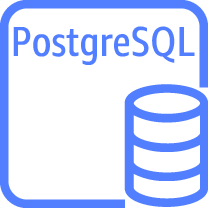 PostgreSQL Instance | Another basic building block of Amazon RDS is the PostgreSQL instance. A database instance is an isolated database environment in the cloud. Amazon RDS supports PostgreSQL DB engines, so you can use this icon to represent a PostgreSQL instance in your diagram. Related reading >> PostgreSQL vs. MariaDB |
| | 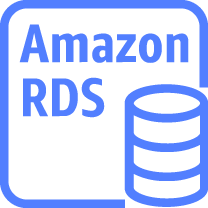 RDS DB Instance | An RDS DB instance is an isolated database environment running in the cloud. It is the basic building block of Amazon RDS. This can contain multiple user-created databases and can be accessed using the same client tools and applications you might use to access a standalone database instance. |
| | 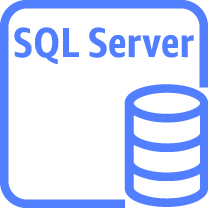 SQL Server Instance | Designate a SQL Server Instance using this icon. |
AWS DynamoDB Icons
 Amazon DynamoDB | | Amazon DynamoDB is a fully-managed NoSQL database service that provides fast and predictable performance with seamless scalability. DynamoDB lets you offload the administrative burdens of operating and scaling a distributed database so that you don't have to worry about hardware provisioning, setup and configuration, replication, software patching, or cluster scaling. DynamoDB also offers encryption at rest, which eliminates the operational burden and complexity involved in protecting sensitive data. |
| |  Attribute | You can map your classes and properties to DynamoDB attribute. Each attribute has a name and a value. An attribute value can be a scalar, a set, or a document type. |
| |  Attributes | Use this icon to indicate multiple DynamoDB attributes. |
| |  Global Secondary Index | Some applications might need to perform many kinds of queries, using a variety of different attributes as query criteria. To support these requirements, you can create one or more global secondary indexes and issue Query requests against these indexes. |
| |  Item | In DynamoDB, an item is a collection of attributes. Each attribute has a name and a value. An attribute value can be a scalar, a set, or a document type. |
| |  Items | Use this icon to indicate multiple items. |
| |  Table | With DynamoDB, you can create database tables that can store and retrieve any amount of data while serving any level of request traffic. You can scale your tables up or down throughout capacity without downtime or performance degradation. |
Amazon DynamoDB Accelerator (DAX) Icon
 Amazon DynamoDB Accelerator | | Amazon DynamoDB Accelerator (DAX) is a fully managed, highly-available, in-memory cache for DynamoDB. It provides up to ten-times the performance – from milliseconds to microseconds – even at millions of requests per second. DAX does all the heavy lifting required to add in-memory acceleration to your DynamoDB tables, without requiring developers to manage cache invalidation, data population, or cluster management. |
Amazon ElastiCache Icons
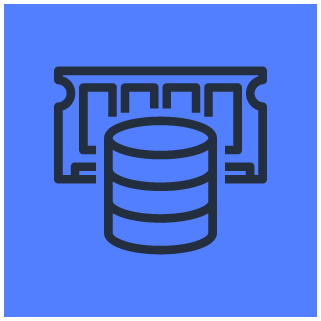 Amazon ElastiCache | | Amazon ElastiCache is a web service that makes it easy to set up, manage, and scale in-memory cache environments in the AWS Cloud. It provides a high performance, resizable, and cost-effective in-memory cache, while removing the complexity associated with deploying and managing a distributed cache environment. ElastiCache works with both the Redis and Memcached engines. |
| |  Cache Node | Amazon ElastiCache supports standard and memory-optimized cache node types, any of which can be indicated using this icon. |
| |  Memcached | ElastiCache for Memcached is a Memcached-compatible in-memory key-value store service that can be used as a cache or a data store. It delivers the performance, ease-of-use, and simplicity of Memcached. ElastiCache for Memcached is fully managed, scalable, and secure — making it an ideal candidate for use cases where frequently accessed data must be in-memory. |
| | 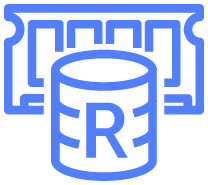 Redis | ElastiCache for Redis works with your Redis clients and uses the open Redis data format to store your data. Your self-managed Redis applications can work seamlessly with ElastiCache for Redis without any code changes. ElastiCache for Redis combines the speed, simplicity, and versatility of open-source Redis with manageability, security, and scalability from Amazon to power the most demanding real-time applications. |
Amazon Redshift Icons
 Amazon Redshift | | Amazon Redshift is a fully managed, petabyte-scale data warehouse service in the cloud. An Amazon Redshift data warehouse is a collection of computing resources called nodes, which are organized into a group called a cluster. Each cluster runs an Amazon Redshift engine and contains one or more databases. |
| |  Dense Compute Node | Dense Compute (DC) node types enable you to create high performance data warehouses using solid-state disks (SSDs). If you have less than 500GB of data, your most cost-effective and highest-performance option is Dense Compute node types. If you have more than 500GB and your primary focus is performance, you can continue using Dense Compute node types for up to hundreds of compressed terabytes. |
| | 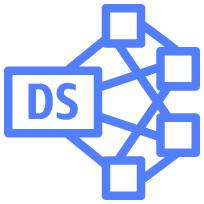 Dense Storage Node | Dense Storage (DS) node types enable you to create large data warehouses using hard disk drives. If you want to scale further than would be cost-effective with Dense Compute node types, you can switch to Dense Storage node types, and scale to over a petabyte of compressed data. |
Database Migration Service Icons
 AWS DMS | | AWS Database Migration Service (AWS DMS) helps you migrate databases to AWS easily and securely. You can migrate your data to and from most widely used commercial and open-source databases, such as Oracle, MySQL, and PostgreSQL. The service supports homogeneous migrations such as Oracle to Oracle, and also migrations between different database platforms. |
| |  Database Migration Workflow/Job | Use this icon to indicate a database migration workflow or job via AWS DMS. Large-scale data migrations can include many terabytes of information and can be slowed by network performance or by the sheer amount of data that has to be moved. |
Back to top
Using the Database Icons in AWS Diagrams
If you’re ready to make your own architecture diagram, check out Gliffy in Confluence. You’ll get a free trial to get started.
TRY GLIFFY
























